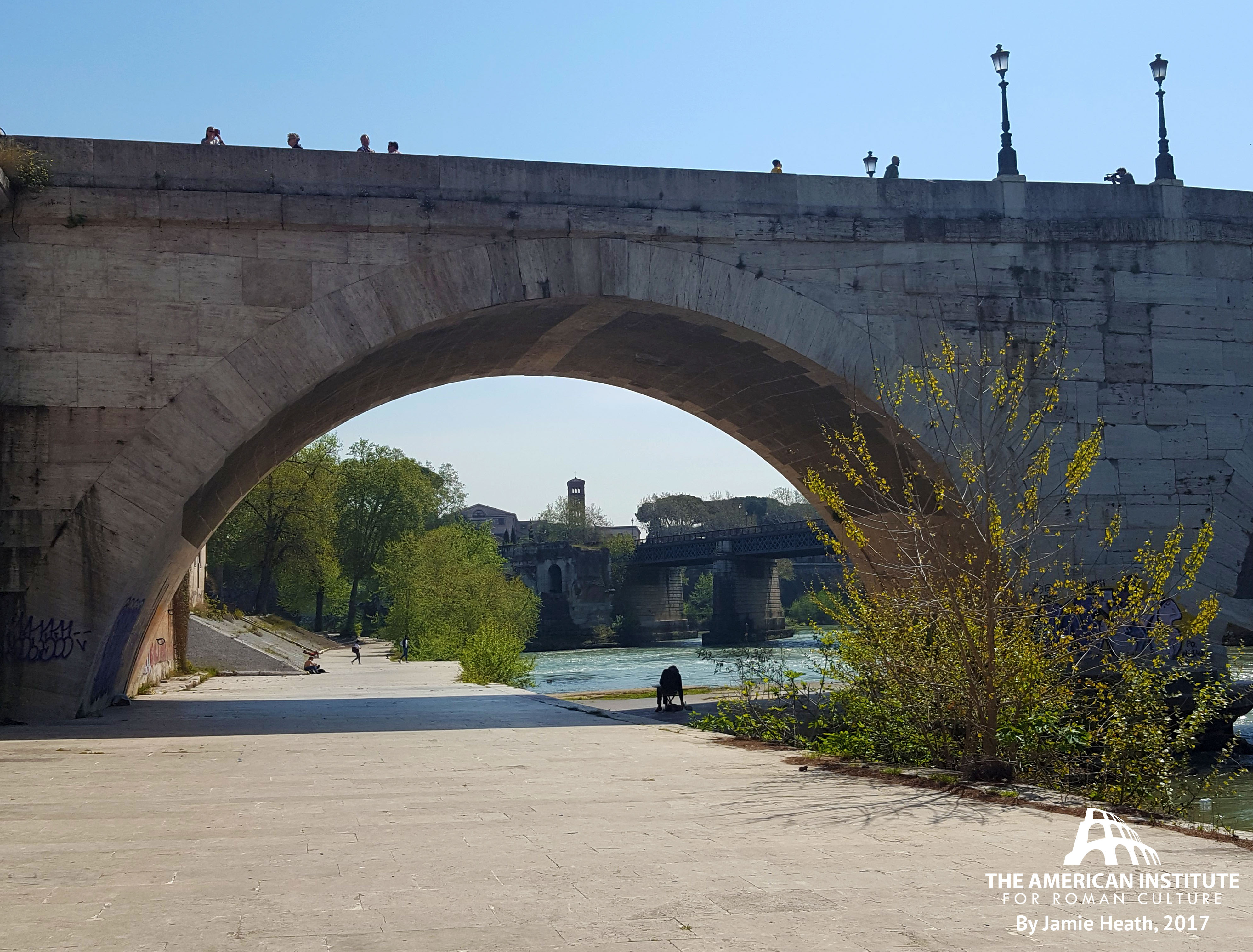Many of the finest surviving examples of Roman architecture are bridges. While other societies had built bridges before, the Romans were among the first to construct them on a truly monumental scale. This was made possible through their use of the arch, which allowed them to build bridges longer and taller than previously possible. The fact that many Roman bridges are still standing, and even in use today, is a testament to their engineering genius.
Before embankments were built in the 19th century, the flooding of the Tiber River was a perennial threat to Rome. Floods could submerge large parts of the city, making it difficult to travel. In early Rome, people relied on ferries to cross the Tiber. The first bridge, the Pons Sublicius, was built in the 7th century BCE by Ancus Marcius, the fourth king of Rome. This bridge was made of wood, allowing it to be dismantled during times of war. Unfortunately, no archaeological remains or artistic depictions of the Pons Sublicius have survived.
As Rome grew in power and wealth, so did its ability to construct complex structures. By the 2nd century BCE, Roman engineering had advanced far enough to allow for the construction of large, permanent stone bridges. The first of these was the Pons Aemilius, which connected the Forum Boarium to Trastevere. Built between 179 and 142 BCE, it had thick piers and wide arches, design elements that would become standard during the late republic and imperial periods. Although the original bridge has been lost, a single arch from an Augustan era repair still stands in the Tiber River. Today, it is known as the Ponte Rotto (broken bridge).
The oldest bridge in Rome is the Pons Fabricius. Built in 62 BCE, it is still in use today, connecting the Campus Martius to the Tiber Island. Another impressive bridge is the Ponte d’Augusto in Narni, Italy. Built around 27 BCE, it spanned 159 meters (520 feet). Today, all that remains is a single arch. Roman engineering and bridge construction reached its peak in the 2nd century CE under the emperor Trajan. He is responsible for building the Alcántara Bridge over the Tagus River in what is today western Spain. At 180 meters (590 feet), it is one of the largest surviving bridges from the ancient world. The largest Roman bridge ever built was Trajan’s bridge over the Danube River. Completed in 105 CE, this colossal structure was 1,135 meters (3,724 feet) long, making it one of the most ambitious building projects from classical antiquity. Though only its piers remain visible today, these ruins are still impressive to behold.
Roman bridge construction, like the empire itself, began to decline after the 2nd century CE. Political instability and economic challenges made it increasingly difficult to build bridges on the scale of those constructed under Trajan. Additionally, many bridges were destroyed during the barbarian invasions that plagued Rome in the 4th and 5th centuries CE. This decline was also seen in the Eastern Roman Empire, despite its relative wealth and stability compared to the West during Late Antiquity and the Medieval period. Even so, the many Roman bridges that have survived continue to impress and inspire visitors today, just as they did thousands of years ago.
Bibliography
- O’Connor, Colin. (2010). “Bridges.” In The Oxford Encyclopedia of Ancient Greece and Rome (1st ed.). doi: 10.1093/acref/9780195170726.001.0001.
- Raddato, Carole. “Roman Bridges.” Following Hadrian. https://followinghadrianphotography.com/2017/04/02/roman-bridges/
- Schmitz, Leonhard. (1875). “Pons.” In the Dictionary of Greek and Roman Antiquities (p.936-939). Retrieved from: https://penelope.uchicago.edu/Thayer/E/Roman/Texts/secondary/ SMIGRA*/Pons.html
- Thayer, Bill. “Roman Bridges.” University of Chicago. https://penelope.uchicago.edu/Thayer/E/Gazetteer /Periods/Roman/Topics/Engineering/bridges/home.html
- Whitney, Charles S. (2003). “Bridges of the World: Their Design and Construction.” Dover Publications.
This content is brought to you by The American Institute for Roman Culture, a 501(C)3 US Non-Profit Organization.
Please support our mission to aid learning and understanding of ancient Rome through free-to-access content by donating today.
Cite This Page
Cite this page as: Darius Arya, The American Institute for Roman Culture, “Bridges (General)” Ancient Rome Live. Last modified 09/27/2024. https://ancientromelive.org/bridges-general/
License
Created by The American Institute of Roman Culture, published on 11/11/2019 under the following license: Creative Commons: Attribution-NonCommercial-ShareAlike. This license lets others remix, tweak, and build upon this content non-commercially, as long as they credit the author and license their new creations under the identical terms. Please note that content linked from this page may have different licensing terms.





